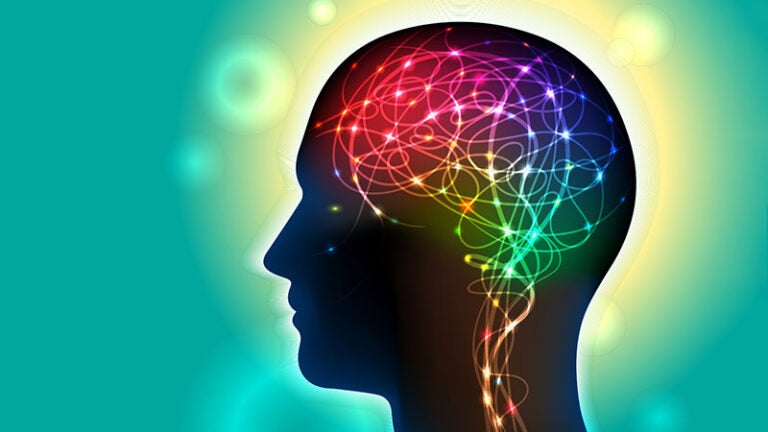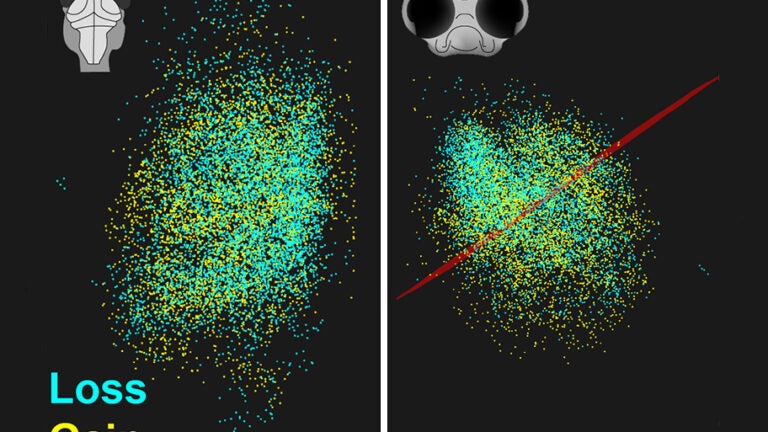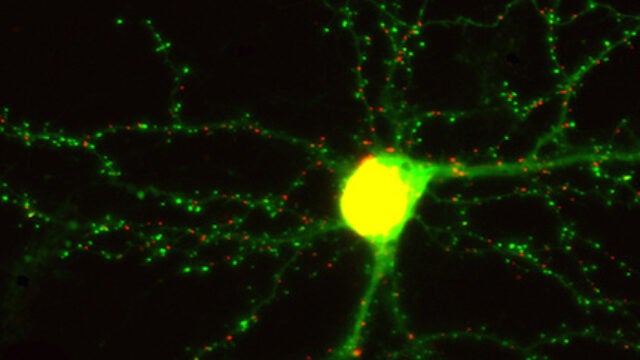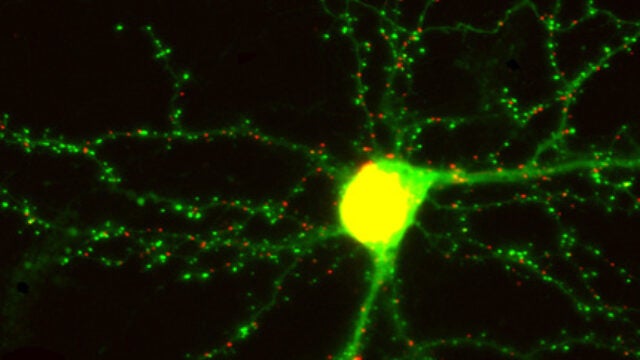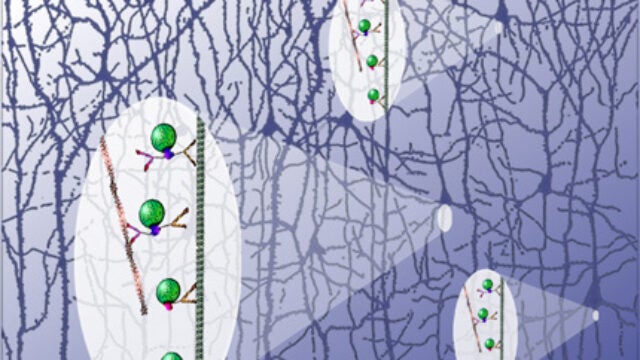A new imaging technique is able to capture where and how memories are formed which could be used to develop more ways to treat conditions like PTSD and addiction. [5½ min read]
USC Dornsife News
Fish that glow; a tailor-made microscope; a new way to catalog science. After six years, researchers produce the first snapshots of memory in a living animal. [4¼ min read]
Researchers led by neuroscientist Don Arnold develop GFE3, which may help in mapping the brain’s connections and controlling neural activity.
USC Dornsife scientists collaborate with engineers to image synapses in living zebrafish and gain a better understanding of the brain.
Researchers from across campus, including Don Arnold and Scott Fraser, visualize and study brains as they form memories.
Led by USC Dornsife’s Don Arnold and Richard Roberts, a new study published in Neuron explains how scientists for the first time can track the physical changes in the brain as new memories are formed.
USC Dornsife’s Don Arnold was a lead researcher on a recent article in Cell Reports. Sarmad Al-Bassam, USC Dornsife Ph.D. student in molecular biology, was lead author of the article.
In a new study, Don Arnold and collaborators show that a microscopic motor drives axonal proteins to the right location in a neuron.
